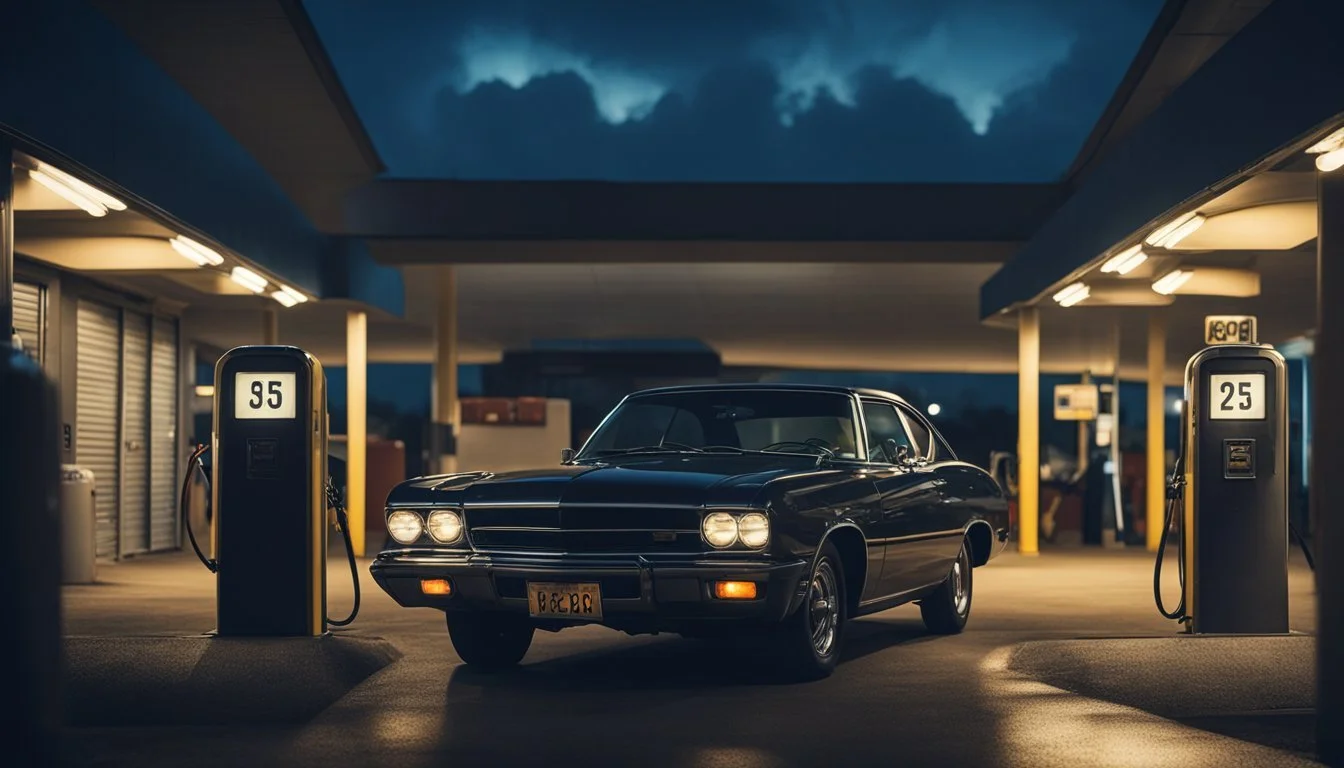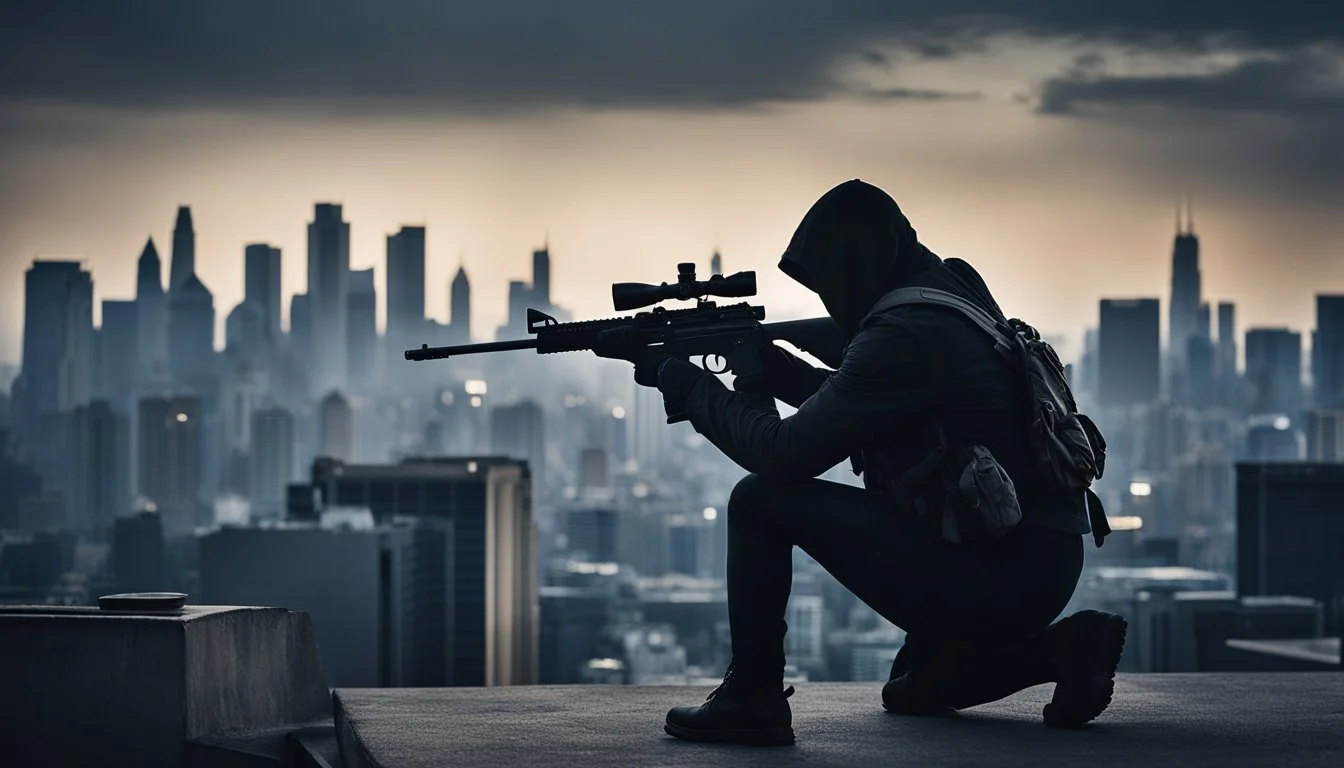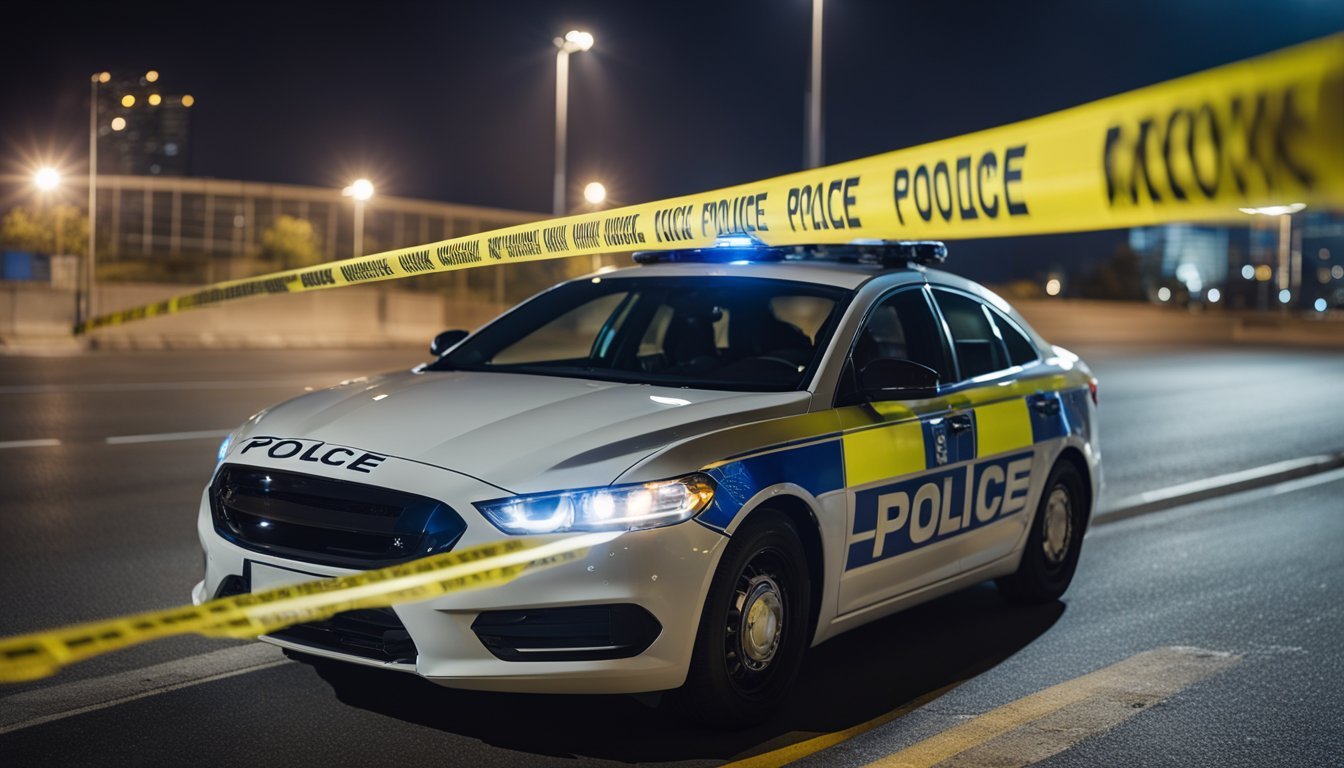Reign of Terror Unveiled: Documentaries Chronicle the Beltway Snipers
The Beltway sniper attacks of 2002 left an indelible mark on the Washington, D.C. area and captured the nation's attention. For three weeks in October, residents lived in fear as a series of random shootings claimed the lives of ten people and injured three others. The terror only ended when police apprehended John Allen Muhammad and Lee Boyd Malvo on October 24.
Several documentaries have been produced to explore this harrowing chapter in American crime history. These films delve into the timeline of events, the investigation process, and the impact on the community. Through interviews with law enforcement officials, survivors, and experts, they provide viewers with a comprehensive look at one of the most notorious criminal cases of the early 21st century.
1) The Beltway Snipers: America's Worst Nightmare
The Beltway sniper attacks of 2002 sent shockwaves through the Washington D.C. metropolitan area. For three weeks in October, two gunmen carried out a series of random shootings that left 10 people dead and three others critically wounded.
John Allen Muhammad and Lee Boyd Malvo terrorized the region with their deadly precision. Their attacks occurred in public places like gas stations, parking lots, and outside schools, creating widespread fear and panic.
Law enforcement agencies launched a massive manhunt to catch the snipers. The investigation was complicated by initial false leads and the seemingly random nature of the attacks.
The documentary "City in Fear: Beltway Snipers" (2022) by MSNBC provides a detailed account of the events. It examines how the attacks unfolded and the impact on the community during those tense weeks.
Another documentary, "Killers Who Held An Entire City Hostage" (2021), explores the psychological aspects of the case. It delves into the motivations of Muhammad and Malvo and how they evaded capture for so long.
These documentaries offer viewers a comprehensive look at one of the most notorious crime sprees in American history. They showcase the fear that gripped a major metropolitan area and the efforts to bring the perpetrators to justice.
2) I, Psychopath: The Sniper's Perspective
"I, Sniper" (2020) offers a unique perspective on the Beltway sniper attacks. This eight-episode documentary series delves into the minds of John Allen Muhammad and Lee Boyd Malvo.
The series begins by exploring how Muhammad and Malvo first met. It then proceeds to chronicle the shootings in detail, providing a comprehensive look at the events as they unfolded.
"I, Sniper" examines the factors that led up to the attacks and their aftermath. It presents a thorough analysis of the killers' backgrounds and motivations, offering viewers insight into the psychological aspects of the case.
The documentary uses a mix of archival footage and interviews to tell the story. It includes perspectives from law enforcement, victims' families, and others involved in the case.
By focusing on the psychological elements, "I, Sniper" provides a unique angle on this tragic event. It aims to help viewers understand the complex factors that contributed to these crimes.
More information on "I, Sniper" (IMDB)
3) The Deadly Duo: Behind the Sniper Attacks
John Allen Muhammad and Lee Boyd Malvo formed a deadly partnership that terrorized the Washington D.C. area in 2002. Muhammad, a 41-year-old Gulf War veteran, met 17-year-old Malvo in Antigua and brought him to the United States.
The pair's motives remain complex and debated. Muhammad harbored deep resentment towards his ex-wife and society, while Malvo was a troubled teenager susceptible to manipulation.
Their attacks began on October 2, 2002, targeting random civilians in public spaces. Over three weeks, they killed 10 people and injured 3 others using a modified Bushmaster rifle fired from a concealed hole in their car trunk.
The sniper attacks paralyzed the D.C. region with fear. Schools implemented lockdowns, and people avoided outdoor activities. Gas stations erected protective barriers as several victims were shot while refueling their vehicles.
Law enforcement struggled to identify the perpetrators due to the randomness of the attacks. A massive multi-agency task force was assembled to track down the snipers.
Muhammad and Malvo were finally apprehended on October 24, 2002, at a rest stop in Maryland. Their capture brought relief to a terrorized community and marked the end of one of the most extensive manhunts in U.S. history.
4) Inside the Mind of the Beltway Snipers
Documentaries exploring the psychology of John Allen Muhammad and Lee Boyd Malvo offer insight into their motivations and relationship dynamics. These films analyze the factors that led to their deadly rampage.
"Sniper: Inside the Hunt for the Killers" (2003) examines the psychological profiles of Muhammad and Malvo. It delves into their backgrounds and the manipulation that occurred between them. More info
"D.C. Sniper: 23 Days of Fear" (2003) portrays the killers' mindset through dramatized scenes and expert commentary. The film explores how Muhammad's military training influenced their tactics. More info
"Blue Caprice" (2013), while not a documentary, provides a fictionalized account of the killers' relationship. It offers a chilling look at how Muhammad groomed Malvo for violence. More info
These documentaries and films attempt to unravel the complex psychological factors behind the Beltway sniper attacks. They shed light on the twisted mentality that led to such senseless violence.
5) The Hunt for the Beltway Snipers
The search for the Beltway Snipers captivated the nation in October 2002. Law enforcement agencies launched a massive manhunt to find those responsible for the random shootings that terrorized the Washington D.C. area.
Investigators faced numerous challenges as they pursued leads and analyzed evidence. The lack of a clear pattern or motive made it difficult to predict where the next attack might occur.
Eyewitness accounts and forensic analysis of bullet fragments provided crucial clues. A breakthrough came when a fingerprint found on a magazine at one of the crime scenes was matched to Lee Boyd Malvo.
On October 24, 2002, police arrested John Allen Muhammad and Lee Boyd Malvo at a rest stop in Maryland. The suspects were found sleeping in the modified Chevrolet Caprice used during their attacks.
The capture of the Beltway Snipers brought relief to a frightened public. The investigation and subsequent trials revealed the extent of the killers' planning and the randomness of their victims.
More information on the Beltway Sniper attacks
6) The Beltway Attacks: Countdown to Capture
The final days of the Beltway sniper attacks were marked by increasing tension and a massive manhunt. Law enforcement agencies worked tirelessly to track down the perpetrators who had terrorized the Washington D.C. area for three weeks in October 2002.
A crucial breakthrough came when investigators connected the shootings to a blue Chevrolet Caprice. This led to the identification of John Allen Muhammad and Lee Boyd Malvo as the primary suspects.
On October 24, 2002, police located Muhammad and Malvo sleeping in their vehicle at a rest stop in Maryland. The arrest operation was swift and successful, bringing an end to the reign of terror that had claimed 10 lives.
The capture of the Beltway snipers was a result of coordinated efforts between multiple law enforcement agencies. Their collaboration and the public's vigilance played key roles in bringing the perpetrators to justice.
The arrest marked the conclusion of one of the most intense manhunts in U.S. history. It provided relief to a community that had been living in fear for weeks, unsure when or where the next attack might occur.
7) Twisted Minds: Sniper Duos in History
The Beltway snipers were not the only duo to carry out such attacks. Throughout history, other sniper pairs have committed similar crimes, often with one dominant personality manipulating the other.
The Zebra Killers operated in San Francisco in 1973-1974. Four men carried out racially motivated shootings, killing 14 people. Their attacks spread fear across the city for months.
In 1977-1978, the Hillside Stranglers terrorized Los Angeles. Cousins Kenneth Bianchi and Angelo Buono Jr. murdered at least 10 young women, leaving bodies on hillsides.
The Dnepropetrovsk Maniacs were active in Ukraine in 2007. Viktor Sayenko, Igor Suprunyuk, and Alexander Hanzha killed 21 people in a series of random attacks over several weeks.
While not all these cases involved sniping specifically, they demonstrate how killer duos can emerge and wreak havoc on communities. The psychological dynamics between partners often play a crucial role in sustaining their violent sprees.
8) Terror Strikes: The Beltway Sniper Case
The Beltway sniper attacks of 2002 paralyzed the Washington D.C. area with fear. For three weeks in October, two snipers carried out a series of random shootings that left 10 people dead and three others wounded.
John Allen Muhammad and Lee Boyd Malvo targeted individuals going about their daily lives. Victims were shot while pumping gas, loading purchases into vehicles, or walking down the street.
Law enforcement faced immense pressure to catch the killers as the public lived in a state of terror. The randomness of the attacks and lack of clear motive made the case particularly challenging to solve.
The snipers used a modified Chevrolet Caprice as a mobile sniper's nest, firing from a hole cut in the trunk. This allowed them to flee quickly after each shooting without being detected.
On October 24, 2002, police finally captured Muhammad and Malvo at a rest stop in Maryland. The arrest brought an end to one of the most extensive and high-profile manhunts in U.S. history.
Wikipedia: Beltway sniper attacks
9) Shattered Lives: Beltway Snipers' Victims
The Beltway sniper attacks left a trail of devastation across the Washington D.C. area in 2002. Ten people lost their lives, and three others were critically injured during the three-week rampage.
Victims came from all walks of life. They included a 13-year-old boy, a bus driver, and several individuals simply going about their daily routines. The randomness of the attacks amplified the fear gripping the region.
Families of the victims faced unimaginable grief and loss. Many struggled to understand why their loved ones were targeted in such a senseless act of violence.
The attacks disrupted normal life in the area. Schools implemented lockdowns, and people avoided outdoor activities. Gas stations erected protective barriers to shield customers while refueling.
Long after the shootings ended, survivors and families of victims continued to grapple with the psychological impact. Some sought solace through support groups and advocacy efforts aimed at preventing future gun violence.
Learn more about the Beltway sniper attacks
10) The Shockwave of the Beltway Snipers
The Beltway sniper attacks in 2002 sent shockwaves through the Washington D.C. area and beyond. For three weeks, residents lived in fear as random shootings terrorized the region.
Several documentaries have captured the intensity and impact of these events. "The Sniper's Plan" (2003) examines the investigation and eventual capture of John Allen Muhammad and Lee Boyd Malvo. More info
"D.C. Sniper: 23 Days of Fear" (2003) recreates the atmosphere of panic that gripped the area during the attacks. It explores how everyday activities became fraught with danger. More info
"The Washington Snipers" (2010) provides a comprehensive look at the case, including interviews with survivors and law enforcement. It delves into the motives behind the attacks and their lasting effects. More info
These documentaries highlight the far-reaching impact of the Beltway snipers. They showcase how the attacks affected not just the victims, but an entire metropolitan area and the nation as a whole.
Background of the Beltway Sniper Attacks
The Beltway Sniper Attacks were a series of coordinated shootings that terrorized the Washington, D.C. area in October 2002. Two perpetrators, John Allen Muhammad and Lee Boyd Malvo, carried out random attacks that left 10 people dead and 3 critically injured.
Timeline of Events
The attacks began on October 2, 2002, and continued for three weeks. The snipers targeted seemingly random individuals in public places across Maryland, Virginia, and Washington, D.C.
Victims were shot while pumping gas, loading groceries, or simply walking down the street. The shooters used a modified Bushmaster XM-15 rifle, firing from the trunk of a blue Chevrolet Caprice.
Law enforcement agencies launched a massive manhunt, setting up roadblocks and conducting extensive searches. The shooters evaded capture by moving frequently and choosing unpredictable targets.
On October 24, 2002, police apprehended Muhammad and Malvo at a rest stop in Maryland, bringing an end to the terror that had gripped the region.
Profiles of the Snipers
John Allen Muhammad, 41 at the time of the attacks, was a Gulf War veteran with a history of domestic violence. He had a troubled past and harbored deep resentments against society.
Lee Boyd Malvo, only 17 years old, was Muhammad's young accomplice. Malvo had a difficult childhood and fell under Muhammad's influence, viewing him as a father figure.
The pair had met in Antigua, where Muhammad had taken Malvo under his wing. Their relationship was complex, with Muhammad exerting significant control over the impressionable teenager.
Both men had previous run-ins with the law, including charges of theft and illegal weapons possession. Their motives for the attacks remained unclear, but theories ranged from terrorism to personal vendettas.
Impact on Public Safety and Law Enforcement
The Beltway sniper attacks in 2002 profoundly affected public safety protocols and law enforcement operations in the Washington D.C. area. New security measures were implemented to protect citizens, while police and FBI teams mobilized in an unprecedented manhunt.
Security Measures Implemented
Schools enacted lockdown procedures and canceled outdoor activities. Many residents altered their daily routines, avoiding public spaces and gas stations. Some gas stations erected protective barriers around pumps. Local businesses saw decreased foot traffic as people stayed home out of fear.
Authorities advised the public to be vigilant and report suspicious activity. They recommended zigzag walking patterns and crouching while pumping gas to make smaller targets. Many people began carrying cell phones at all times for emergency communication.
Police and FBI Response
Law enforcement launched a massive investigation involving local, state, and federal agencies. Roadblocks and vehicle checkpoints were set up throughout the region. Police increased patrols in high-risk areas and potential sniper locations.
The FBI deployed its Rapid Start system to manage the flood of tips and leads. Specialized tactical units were brought in to assist. Authorities used geographic profiling and forensic analysis to try to identify patterns and suspects.
Communication between agencies improved as the investigation progressed. A centralized command center was established to coordinate efforts. The case highlighted the need for better information sharing among law enforcement entities.
Media Coverage and Public Reaction
The Beltway sniper attacks gripped the nation, dominating news cycles and shaping public perception. Media outlets played a crucial role in disseminating information and influencing the atmosphere of fear that permeated the Washington D.C. area.
Role of News Media
News outlets provided extensive coverage of the sniper attacks, broadcasting live updates and analysis. Major networks dedicated significant airtime to the unfolding events, often interrupting regular programming. Local stations in the affected areas maintained round-the-clock reporting.
Journalists faced challenges in balancing public safety concerns with the need to inform. Some critics argued that the intense media focus inadvertently aided the snipers by revealing police tactics. Others praised the media's role in keeping the public informed and vigilant.
Press conferences held by law enforcement became must-see TV, with Chief Charles Moose of Montgomery County Police emerging as a central figure. His cryptic messages to the snipers, delivered through the media, added a surreal element to the coverage.
Public Perception and Fear
The random nature of the attacks instilled widespread fear in the Washington D.C. metropolitan area. Residents altered their daily routines, avoiding outdoor activities and gas stations - frequent target locations. Schools implemented lockdown procedures, and extracurricular activities were cancelled.
Public anxiety was fueled by initial profiling errors. Early media reports suggested a white van as the suspect vehicle and described the shooter as a lone white male. These inaccuracies led to misplaced suspicion and highlighted the challenges of real-time reporting during an active investigation.
The sniper's ability to evade capture for weeks heightened tension. Each new shooting reignited panic and speculation. Online forums and call-in shows became outlets for public fear and amateur sleuthing, reflecting the community's desire to contribute to the investigation.






